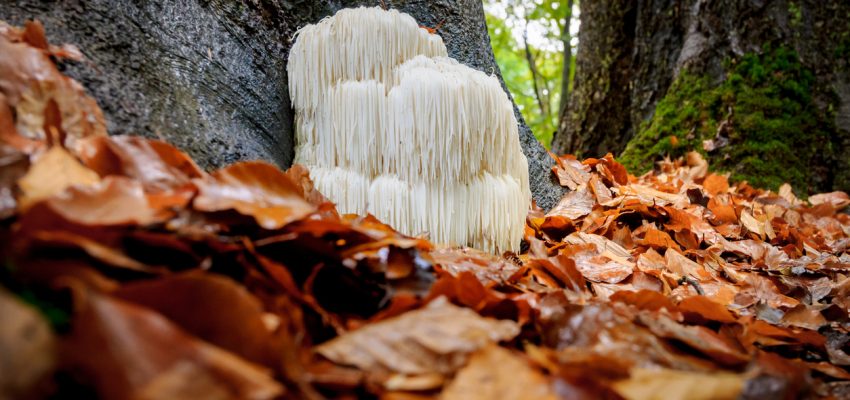*There are many varieties of toxic mushrooms that can make you sick or even kill. Only forage mushrooms with an expert in the field.
Lion’s Mane has no known toxic doppelgangers, so it’s a great option for beginner foragers. Look for them in the late summer or early fall on fallen hardwood trees in temperate forests of the Northern Hemisphere. It’s a shaggy white/beige mushroom that is also known as Mountain Priest, Monkey’s Head, Lion’s Tooth, Bearded Tooth, Satyr’s Beard, Bearded Hedgehog, and Pom-Pom Mushroom.
Benefits
Lion’s Mane is high in protein and Vitamin D—mushrooms are one of the rare foods that contain vitamin D. It is popular in Chinese medicine where it is known as Hou Tou Gu and is used to treat liver, spleen, lung, heart, and kidney ailments. In Japan Yamabushitake is used by some monks to improve meditation. Studies show that it does support brain health and it is currently being studied as a way to treat Alzheimer’s. Some studies also show that it supports brain health and immune systems and it has been used to treat diabetes as it lowers blood sugar. It’s antioxidants and antibacterial properties may help with digestive issues and promote healthy cell growth. However, more studies are necessary to prove any of the above health claims.
Cooking with Lion’s Mane Mushrooms
Lion’s Mane are very absorbent, so avoid soaking them in water. Rinse quickly and dry immediately with a soft towel. Avoid cutting them and tear them up instead into the desired size. Dry fry them until excess water has been absorbed, then add your fat (butter or olive oil work well). A little garlic and salt won’t go astray here. Once fried, you can add them to any dish you like.
Storing Lion’s Mane Mushrooms
They will keep from fresh in a paper bag in the fridge for a week. If you have an abundance, you can sauté them, then freeze them in a bag or sealed container until needed. If you want to dry them, tear into bite-size pieces and lay in a single layer in your dehydrator. Dry at 110 – 125 degrees for several hours, until no moisture remains and mushrooms are leathery. You can keep dried mushrooms for up to a year.




